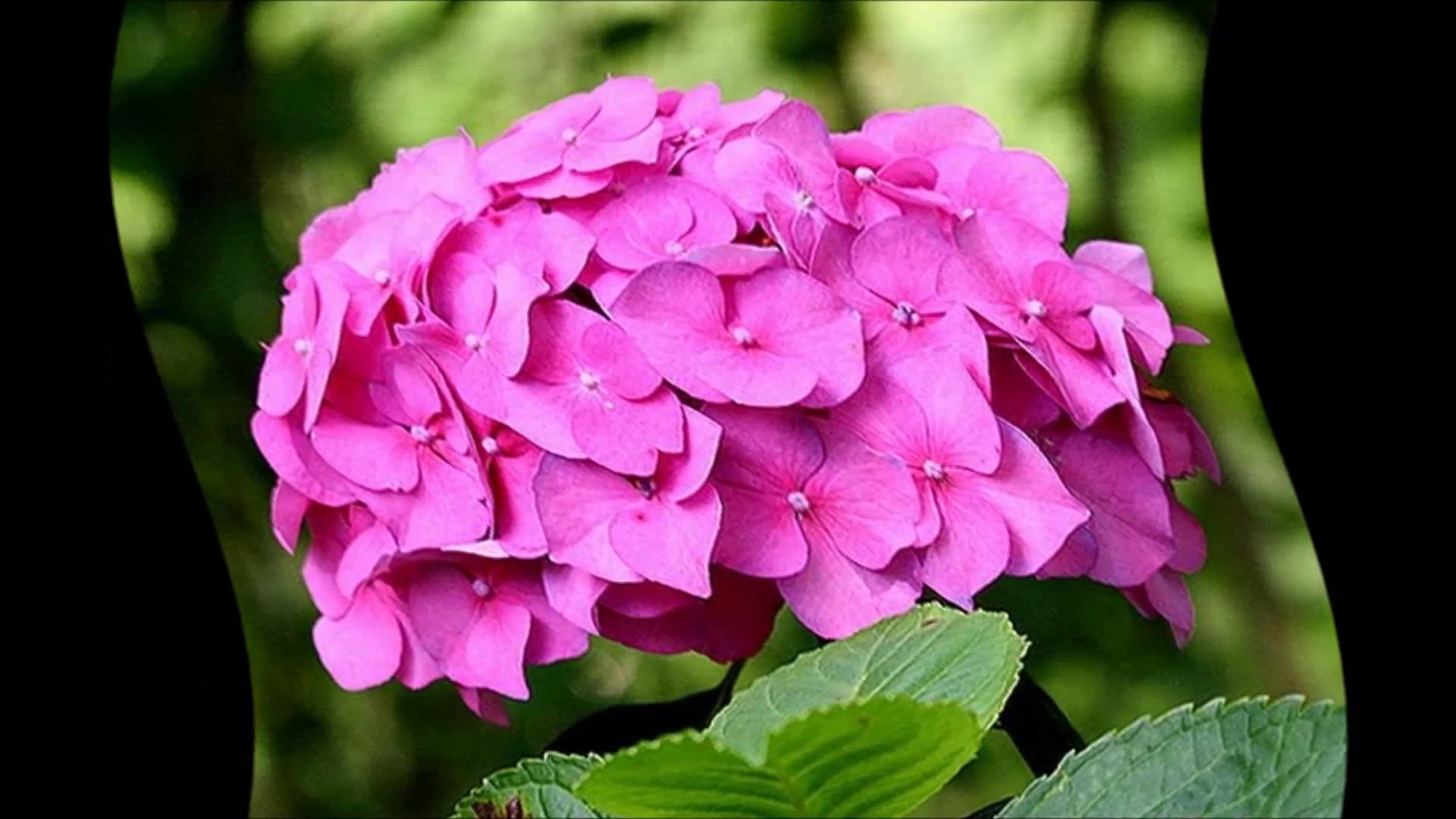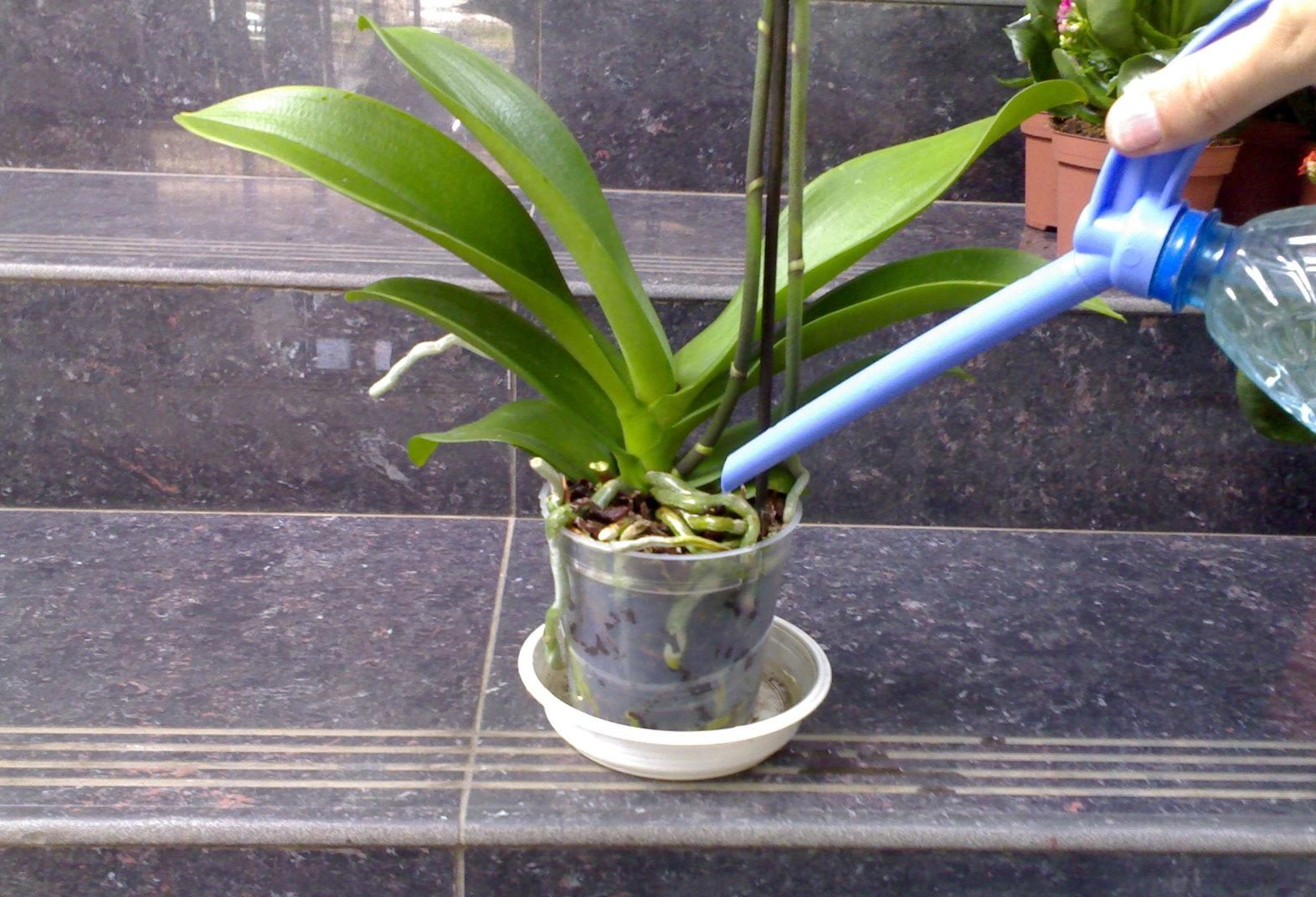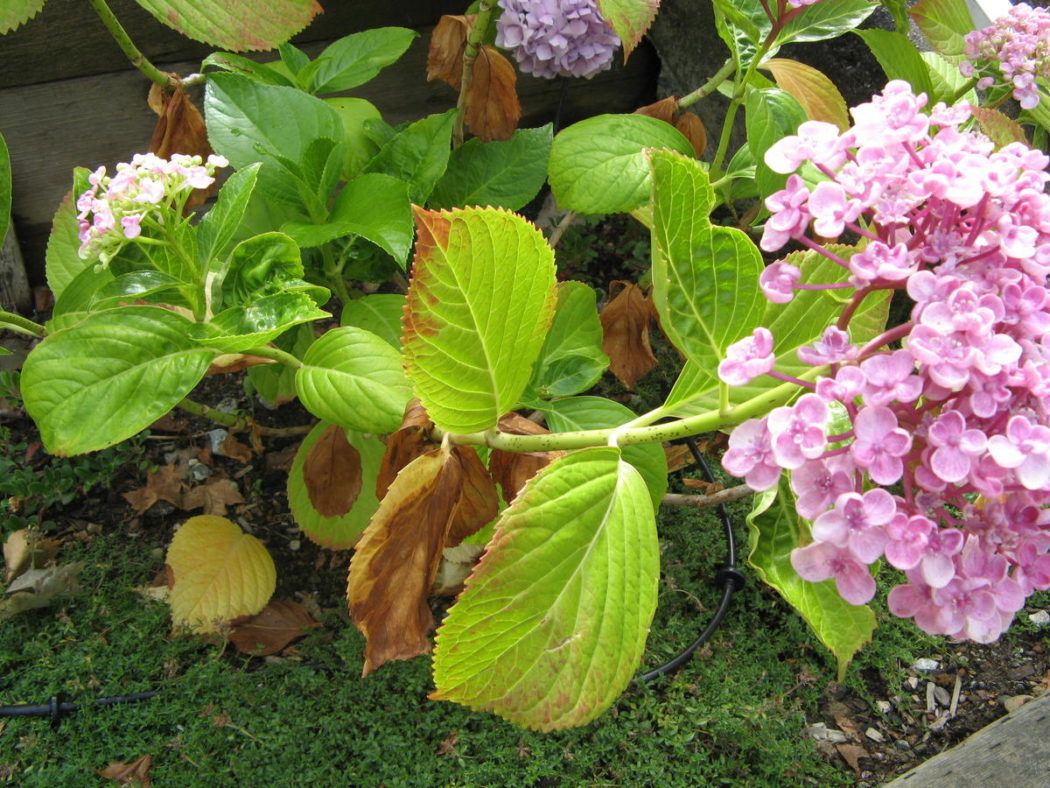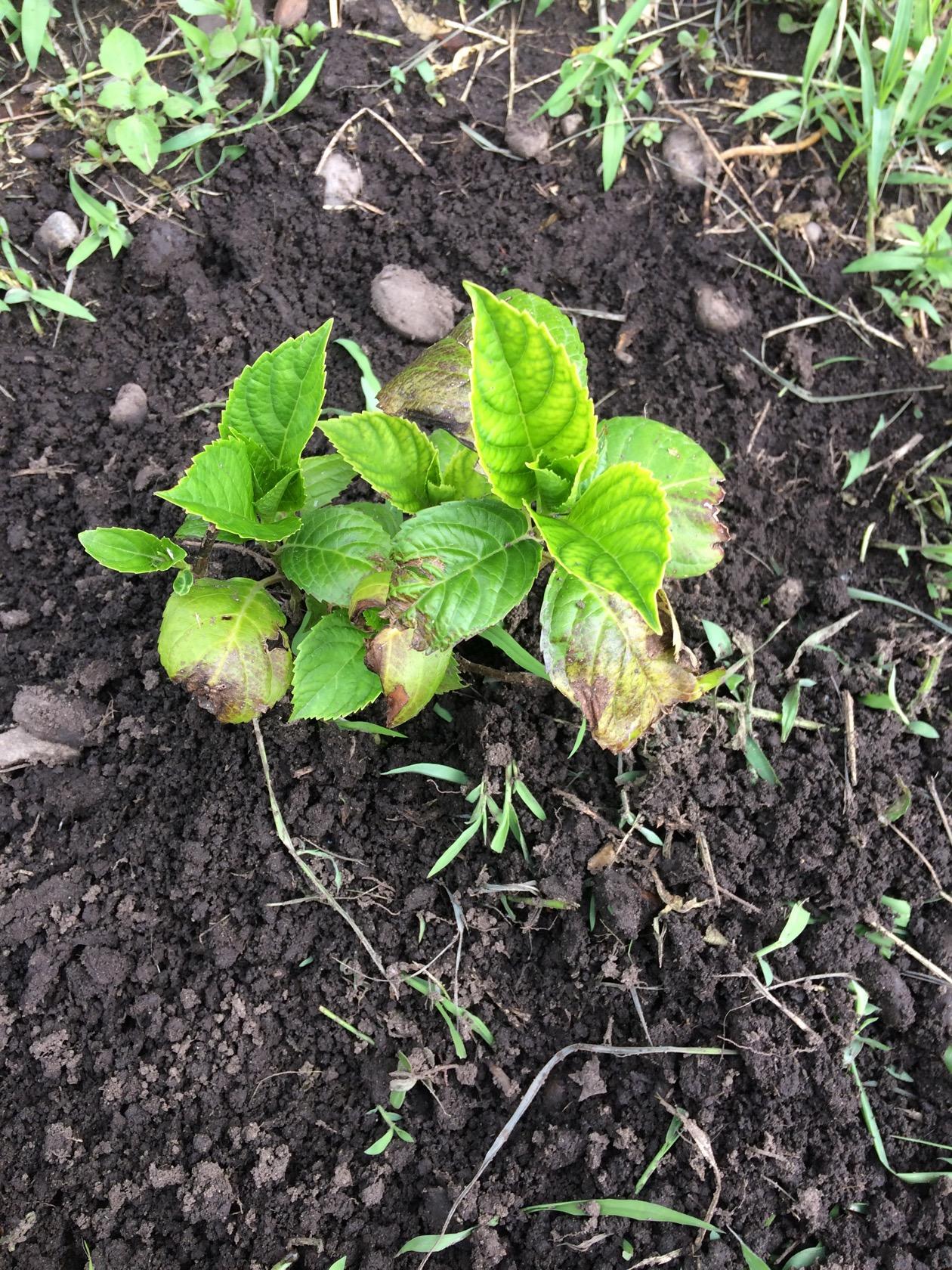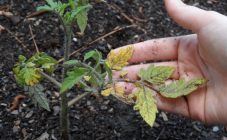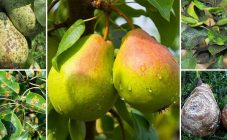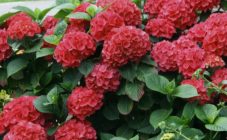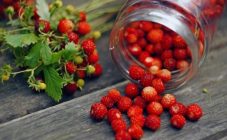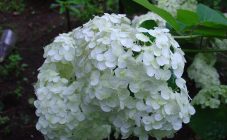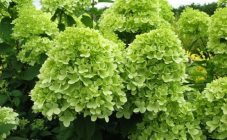Content:
At the mention of hydrangea, some summer residents draw in their imagination voluminous snow-white spherical inflorescences, others present magnificent velvet bluish flowers in a semi-shady area. Someone sees small tree-like plants that are covered with paniculate flowers. But hydrangea leaves sometimes turn yellow, what should summer residents do in such a situation?
Features of growing hydrangea
When growing hydrangeas, emphasis is placed on:
- The plant's love for water. Translated from Latin, Hydrangea means "a vessel filled with water."
- The acidity level of the soil is pH 5.0. For hydrangea, acidic earth is preferable. The content of lime in the soil in large quantities is not to the liking of the plant. The tree species is more tolerant, but it should not be overused for good flowering.
- Loose fertile soil and the regularity of fertilization - affect the development of hydrangea.
- The varieties that bloom on the shoots of the current year - the bushes are pruned only in the absence of vegetation.
- The location of the hydrangea. In areas with sultry summers, water-loving hydrangeas like partial shade. Only a few varieties bloom in a sunlit place, however, with periodic and abundant watering in drought conditions. Punctures during the cultivation of hydrangeas are often associated with an unfavorable soil reaction for the culture. The plant requires an acidic microenvironment. Petiole and large-leaved hydrangeas also grow in the central zone of Russia.
- Crown formation. To obtain leafy and flowering shrubs, the apical shoots are pinched from the culture.
- Temperature conditions. Hydrangea is successfully grown indoors at a temperature of + 12 ... + 18 ° C. Prevent freezing of the bush: the hydrangea is removed in time for storage in autumn. Bring in a dark and cool place. A week's stay in the dark will affect the fall of the frostbitten foliage. Later, the hydrangea is stored in the cellar until spring.
- Apical kidneys. It is important not to damage during storage - they provide luxurious flowering. If the soil in the pot dries up, a single watering during the storage period is enough.
Hydrangea leaves turn yellow: reasons
A change in the color of the leaves signals the unhealthy hydrangea. There are many factors that explain why hydrangea leaves turn yellow.
Nutrient deficiency
Lack of fertilizer provokes the yellowness of hydrangea leaves. With the arrival of spring and until the height of the summer season, the plant requires systematic feeding: 2 times monthly with mineral fertilizing and 1 time with organic matter.
It is important for summer residents to figure out if the leaves of the hydrangea brighten, than to feed. The lack of macro- and microelements is eliminated by the introduction of nitrogen-containing dressings in the spring, in the summer they use Kemira flower for lush flowering. It is customary to apply phosphorus-potassium fertilizers in the fall to prepare the hydrangea for the dormant period and the formation of young shoots and flower buds.
The deficiency of nutrients is felt acutely in the budding phase. At this stage, the garden hydrangea is fed once a week. |
Improper watering
Hydrangea is classified as a moisture-loving crop. She is provided with the frequency of watering, regardless of the variety. They do not allow the soil to dry out - the hydrangea cannot stand the heat, the green leaves turn yellowish and curl.In drought, watered 2 times weekly. At least a bucket of liquid is poured under an adult.
When in the summer season there are sometimes short rains, and peat mulch is introduced into the near-stem zone of the hydrangea, it is possible to limit the monthly watering to 1 or 2 times.
The indoor hydrangea is moistened by drying the top layer of the earth in a flower pot. With low air humidity in the room, the green leaves of the plant dry out. Therefore, the culture must be constantly sprayed, especially in the heat, and the humidity at the location of the flower must be monitored. It should be above average.
An excess of moisture is no less dangerous for the plant. Failure to comply with watering norms causes lethargy and weakness of the plant. Why did the hydrangea leaves suddenly turn yellow and what to do - the decision is obvious. It will be necessary to reduce regular watering and their volume to avoid root rot.
Low soil acidity
Street hydrangea likes acidic soil with a pH of 3-6. When the crop grows in alkaline soil, the green foliage sometimes turns yellow in color.
The problem is fought by acidifying water with lemon juice: 2-3 drops per 1 liter of liquid. A vinegar essence is suitable, which will require 1 tsp. in a 10 liter bucket of water.
Pests
Pest insects are often responsible for why hydrangea leaves become pale. With an invasion of a spider mite, the plant reacts by yellowing and drying out the leaves. Strong colonization of parasites even leads to the death of the plant. If the leaves turn pale and the hydrangea suffers from pests, acaricides will help out. Insecticides are readily available commercially.
When blackening foliage, experts recommend looking for aphids that drink vegetable juice. The sticky liquid is a fertile environment for the growth of a sooty fungus. Tobacco infusion or insecticides can help hydrangeas fight pests.
Diseases
If the hydrangea has light leaves, the plant suffers from phyto-disease. The defeat of powdery mildew is evidenced by a gray bloom on the back of the leaf. Outside, green-yellow spots are formed, which after a certain time turn brown and take on clear outlines.
Fungicides resist the disease:
- Fitosporin and Alirin (at the onset of the disease);
- Jet and Speed;
- Topaz and Tiovit.
When the green leaves do not please with the richness of the color, turn into black or brownish, turn yellow and change, the hydrangea suffers from gray rot or spotting:
- annular and ascochitous;
- septoria and phylloskitous.
As a result, the leaves change color, dry out and fall off. They fight pathogens with Bordeaux mixture, copper sulfate, and other pesticides that are used to treat hydrangea bushes.
Other reasons
Among other reasons why hydrangea leaves turn white, there are:
- Incorrect transplant. When the roots are injured, the plant is characterized by poor growth and a dried edge of the leaves. The culture needs abundant, however, not excessive watering. When irrigating the land, once every one and a half weeks, a stimulant for the formation of roots Zircon is added to the liquid. Fertilizing is done after the beginning of the development of the bush.
- Excess light. On the south side of the window sill, if there is no shade, the culture can burn the foliage. Ideal for hydrangea windows located on the west or east side of the house.
- Drafts. Hydrangea belongs to thermophilic crops, does not tolerate sudden temperature jumps and through blowing at the landing site. So that the leaf plates do not change shade and do not fade, it will be necessary to transplant the hydrangea shrub to a site protected from the winds. The main thing is that the ground is appropriate and there is enough sun.
Prevention
How to care for a plant so that it is not weak? Preventive measures are the best way to counter various phyto-diseases of flora and fauna.
To prevent changes in color with green leaves, the following rules are followed:
- adhere to the water regime: they try not to flood or dry out the hydrangea;
- water the bush with soft settled water;
- expose the plant only in a warm room, where there are no drafts;
- shy away from the sun's rays on hydrangea foliage;
- so that the leaves turn magnificently green, summer residents remember about periodic feedings.
- carry out antimicrobial and antiviral treatments.
Compliance with the recommendations prevents yellow foliage and contributes to the preservation of beauty for a long period of time.
How to reanimate when foliage turns yellow
When changing the greenish color of the leaves to yellowish, you will need to take adequate measures to heal the hydrangea, otherwise the shrub will die. It is helpful to establish the causes of the ailment and to find the appropriate therapy.
When the bush dries up, they try to restore it. When hydrangeas grow in the garden, with the arrival of spring, frozen areas are cut out. When the crop is affected by rot, the pruning will have to be done 1 cm below the infected area. The cut-off site is certainly sprinkled with ash or activated carbon. The secateurs must be disinfected after the procedure. The shrub is treated with fungicides, depending on the phyto-disease.
To reanimate the hydrangea from the vase, from where it is necessary to extract the flower, you need to cut the lower part obliquely and immerse the plant in a steep pitch for 3-5 minutes. When the air bubbles stop coming out of the stem, the hydrangea is taken out of the liquid, the part that was in the boiling water is cut off, and the plant is placed in cold water. Manipulation will add charm and elegance to the flower.
Often, hydrangea wakes up from weak hibernation; as it grows, they notice crushed foliage with veins like steel. Lack of nitrogen is replenished by foliar spraying of the crown with ammonia. Top dressing is prepared from 2 tbsp. l. ammonia that is dissolved in 10 liters of water. Enough 1-2 procedures.
If the leaves of the plant turn yellow from chlorosis, the hydrangea is treated with iron vitriol, as well as with iron sulfate at the rate of 5 g per 1 liter of liquid.
You will need to transplant the hydrangea into a new container and water it with softened water.
Folk recipes for the growth of hydrangea
If the bush grows poorly after the winter season, the roots are most likely damaged by parasites, fungal infections or pathogenic bacteria. The plant is removed from the container and the roots are checked for rot or harmful insects.
Throw the substrate out of the pot, wash the dishes with a disinfectant. Then fill with fresh soil, placing drainage on the bottom of the container in advance. Moisture-loving hydrangea does not tolerate moisture stagnation, which threatens to damage the roots.
Next, you need to water the bush with nitrogen - the growth of the flower and the set of green mass are accelerated. During the budding period, the hydrangea is fed with phosphorus-potassium fertilizers.
To create the culture of the required conditions, attention is paid to the peculiarities of care. The roots of the plant lie under the surface of the soil. When planted in a very deep pot, the hydrangea will not grow until the soil in the container is filled with roots. When growing a flower bush, choose a small, sturdy earthen vessel.
Indoor hydrangea prefers coolness, in summer it is placed in an open space, in partial shade. In winter, it is good to keep in a cool room with a temperature in the range of + 5 ... + 10 ° С. When there is no suitable place in the house, the branches are cut after flowering, and the container is hidden under the bath. In the spring, the flower is taken out of the "dungeon", watering and feeding is carried out.
In spring, the plant is fed:
- mullein (1:10);
- chicken droppings (1:14).
When preparing the solution, organic raw materials are poured with water and infused for 24 hours. 5 liters are consumed per 1 adult culture, 1-2 liters are enough for young seedlings.
For bright and lush flowering in the summer season, use:
- herbal infusions (thistle, nettle, dandelion, celandine);
- yeast feeding or bread crumbs.
Feeding with bread is important for the health of hydrangea and green leaves of the plant.
For her you will need:
- 10 liters of water;
- 1000 g of crackers;
- 100 gram pack of yeast;
- 1 tbsp. l. granulated sugar.
The mixture is insisted in the warmth for a day. 5 liters of fermented mass are poured under the bush.
To enrich the soil with microelements and protect against diseases, 500 ml are diluted in 10 liters of liquid:
- serum;
- curdled milk;
- kefir.
In the fight against aphids, shrubs are sprayed with soapy water or garlic tincture (200 g per 10 liters of water).
In order for the hydrangea to delight the owners with luxurious flowering and health, it is important to provide proper care and treat diseases in a timely manner.
